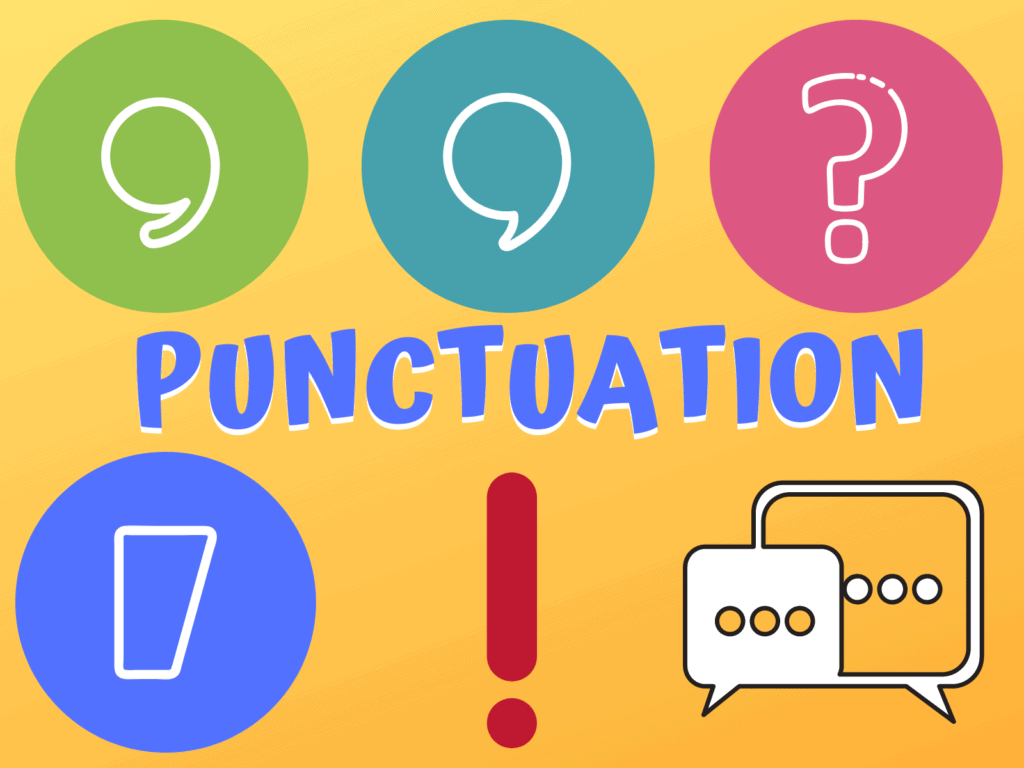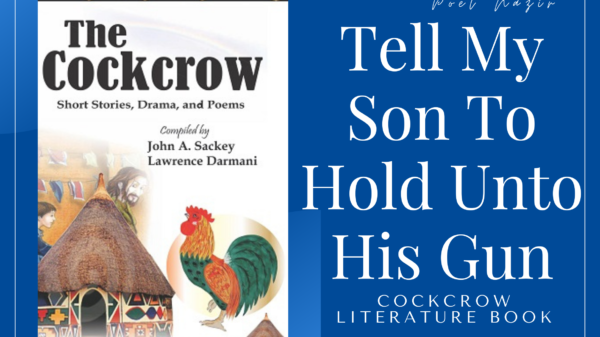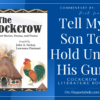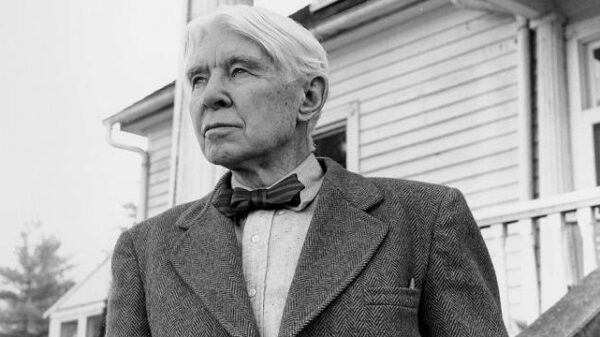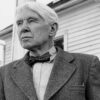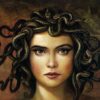Table of Contents
Punctuation Marks
Punctuation Mark’s are symbols that are used to offer clear meaning and understanding by separating phrases, clauses and words.
Some examples of punctuation mark’s are; full stop, comma, question mark, exclamation mark, colon, semicolon, parentheses/brackets,hyphen, apostrophe, quotation mark/inverted comma etc.
Full Stop(.)
1. Full stop is used to end sentences. This means it is used to show that, a particular sentence, expression of thought has ended.
Examples
- My father has a car.
- She went home after visiting her mother’s house.
- He took me after the party.
- We go to school from Monday to Friday.
- Wendy’s parents live in Brooklyn.
2. Full stops are also used in abbreviations. This means they are used to shorten a word by either writing only the first letters or choosing specific alphabets from the word.
Examples
- Did you have appointment with Dr. Philip?
- Please Turn Over = P.T.O.
- Post Traumatic Stress Disorder = P.T.S.D
- Mr. Isaac is a plumber.
- Mrs.
- Hospital: Hosp.
Read Also: 10 Relevant Principles To Improve Your Writing Skills
Comma(,)
1. Comma is used before a phrase or a clause to give extra serial or information about the noun it follows.
Examples
- The company, whose products are of high quality, will soon be collapsed.
- President Donald Trump, whose political party lost the elections, has become the biggest threat to his opposition next election.
- Lake Bosomtwe, one of the the lakes in Ghana, will soon dry off due to the toughness of the harmattan.
2. Comma is also used to separate items, phrases, words and clauses.
Examples
- Did you buy onion, pepper, salad and carrots?
- When you go home, extend my greetings to you mom.
- We went to school with Aisha, Salamtu, Faiza and Fremah.
- You should go home, I’m right behind you.
- Even though we were there, but we couldn’t pay the entrance fee.
3. Commas are used to separate introductory phrases or words. Examples; Because, however, therefore, also, in fact, nevertheless etc.
Examples
- Yes, the book was stolen from my bag.
- Sorry, I was mistaken.
- In fact, words are bot enough to explain how I feel.
- By the way, I will go home before my dad calls me.
- No, he wasn’t part of the team.
Read Also: 7 Signs She Likes You; Shoot Your Shot
Question Mark(?)
Question Mark’s are used at the end of a direct question. Or it is used to seek for confirmation about something. Note: Most/all statements or sentences that begins with these words are questions
- What – What is your name?
- Did – Did you sweep the house?
- When – When did you return from the trip?
- Who – Who teaches you?
- Where – Where are your friends?
- Have/Haven’t – Have you had your breakfast?
- Has/Hasn’t – Has she eaten the food I gave her?
- Must/Mustn’t – Must you say anything your hear?
- Were/Weren’t- Weren’t you the best player in the school?
- Will/Won’t: Won’t your family come here for the holidays?
- Are/Aren’t – Are you wiser than everyone?
- Which – Which one of those bags are yours?
- Is/Isn’t- Isn’t your father the best at this?
- Was/Wasn’t – Wasn’t she the one who spread the rumor?
- Shall – Shall we call our teacher now?
- Would/Wouldn’t/Could/Couldn’t/Should/Shouldn’t – Could he have done that wicked act?
- How – How was your day, mate?
Examples
- Were you in school last week?
- Did your father beat you when you went home late?
- What is your name?
- Who presented his or her homework first?
- Are you still angry?
Colon(:)
Colons are used to indicate that, there is something more to follow a given statement.
Examples
- You have to go: my father hates to see you here.
- You have to call an electrician: our light is off.
- She listed all the items: gold, diamond, bronze and silver.
- When I went to the market, I bought the following: bag of rice, a gallon of oil, sardine and vegetables.
Exclamation Mark(!)
Exclamation Mark’s are used to express strong emotion of anger, bewilderment, proclamation etc.
Examples
- Please don’t!
- Hey! I hate that.
- Wow!
- God!
- Don’t be silly!
Brackets/Parentheses ()
1. Parentheses or brackets are used to separate extra thought or information from the main root sentence.
Examples
- Kofi leaned close to our wall (he was actually listening to whatever my parents said).
2. Parentheses or brackets are also used to give Highlights of information in a given sentence.
Example
- Explain this question referencing from (Question 1c).
Read Also: The Story of Basna Balahu, The Tallest Soldier In Sudan, 1935
Hyphen(-)
1. Hyphens are used to used to form compound words. That’s, forming a words by combining two other words.
Examples
- Self-driving
- Kind-hearted
- Super-hot
- As-is
- Strong-minded
- College-level
2. Hyphens can also be used to separate prefixes when the vowel ending is the same as the vowel beginning beginning the next word.
Examples
- Pre-existing
- Co-owner
- Mis-selling
Others
- Pre-order
- Co-workers
- Mix-up
- So-called
- Pre-cut etc.
3. Hyphens can be used when forming a compound word from two other words which are separated by a preposition(of, and, to, in etc)
Examples
- Up-to-date
- True-to-life
- Up-to-the-minute
- In-the-news
- Daughter-in-law
- Well-to-do
Quotation Marks/Inverted Commas(“…”/’…’)
1. Quotation Marks/Inverted Commas are used to highlight a technical word or term which a write wants to draw to the attention of his readers.
Examples
- She was asked to hold the ‘rod’ till her hands ache.
- Jamila took the first step from the so-called ‘brilliant’ boy in class.
2. Quotation Marks/Inverted Commas are also used to indicate a direct speech exactly as said by the speaker.
Example
- She said to me “Did you go for your lunch today ?”
- The dog kept barking “WOW! WOW! WOW!”
- “I have to make sure my sister is doing the right thing” Willy said concerned.
3. Quotation Marks/Inverted Commas can again, be used to highlight names of shows, books, events etc.
Examples
- Have you read ‘Othello’, a book authored by William Shakespeare?
- We went for the ‘Half Serious Comedy Show’ overnight.
- ‘Lonely Days’ and ‘Harvest of Corruption’ were some books we learnt in high school.
Apostrophe
1. Apostrophes are used to used with the alphabet ‘s’ to show possession.
Examples
- My father’s car is worth $50,000.
- Did you take your sister’s phone?
- The school’s uniform must be changed.
- We took our parent’s money for charity works.
- It’s mine.
2. Apostrophes are also used to show omissions from words. This means that, they are used to show that one or more letters have been taken off a particular word. This is in case of ‘contraction’
- Won’t = Will not
- Hasn’t = Has not
- Can’t = Can not
- Shouldn’t = Should not
- Would not = Would not
- Couldn’t = Could not
- Could’ve = Could have
- Haven’t = Have not
Read Also: William Butler Yeats’ Biography; Life, Age, Poems, Plays, Wife, Poet Laureate
Semicolons
1. Semicolons are used when the meaning of two different sentences are closely related.
Examples
- Everything is working according to plans; let’s just hope for the best.
- Some like to travel; others like to stay home.
2. Semicolons can also be used in place of commas to separate a part of a sentence that are separated by commas.
Examples
- There are three things to know; be smart, don’t be cheap, work hard.
- Buy these things when coming; school bags, exercise books, energy boosters and a pair of size 34 shoes.

